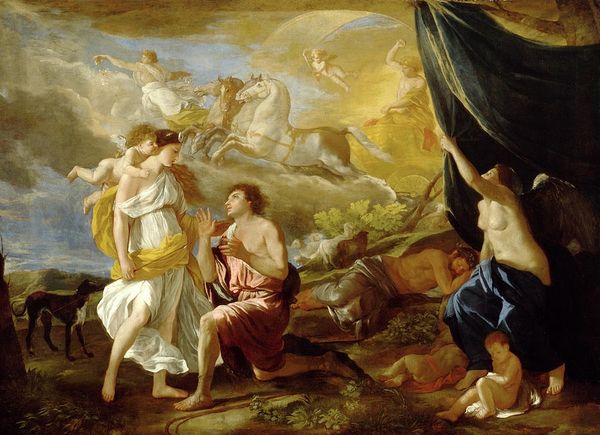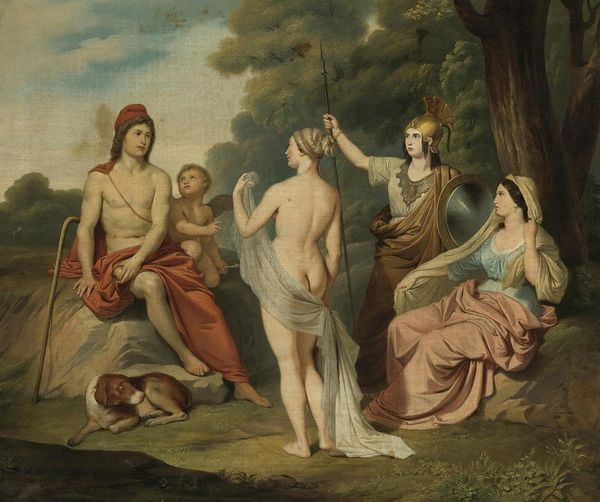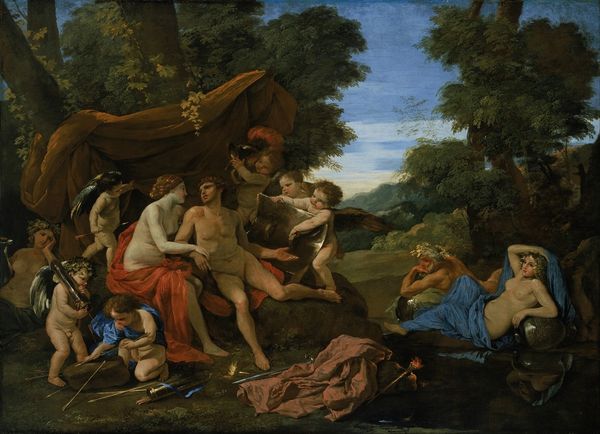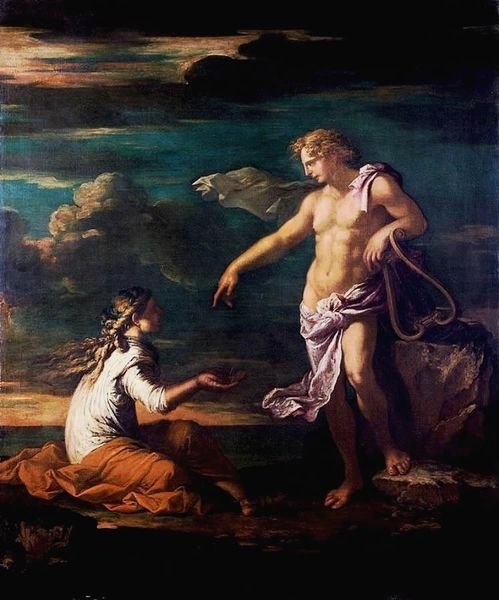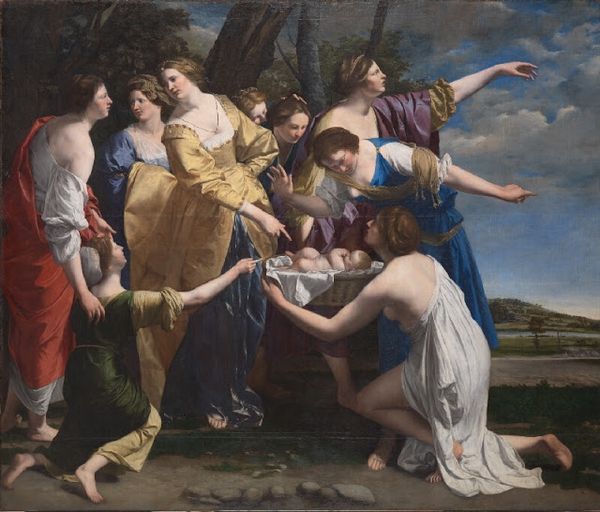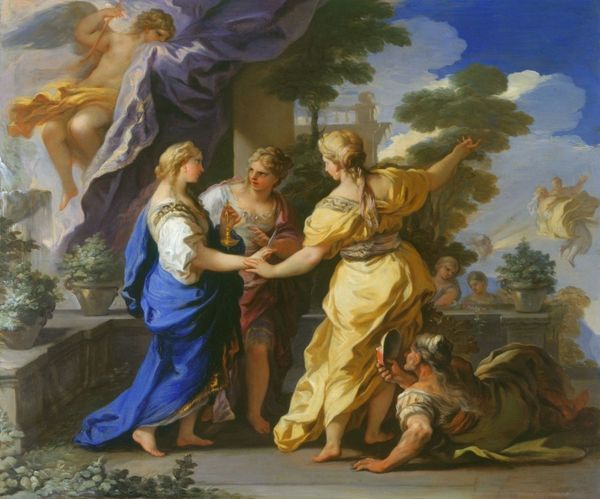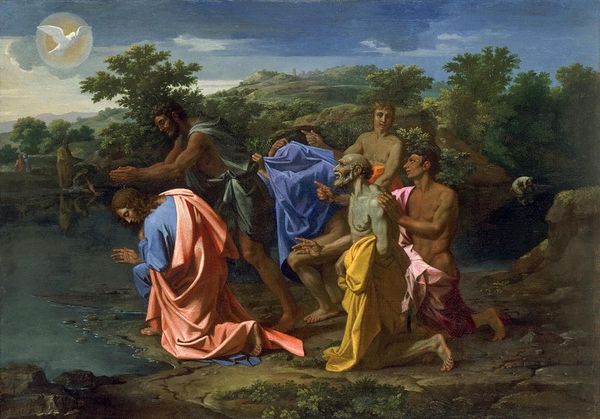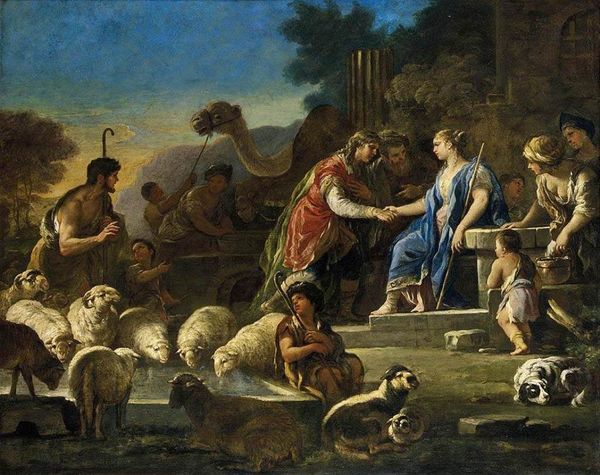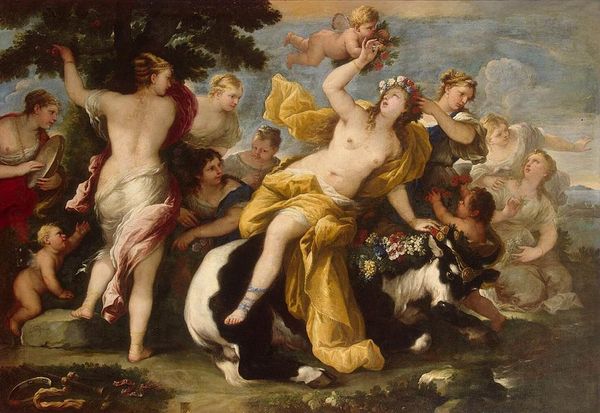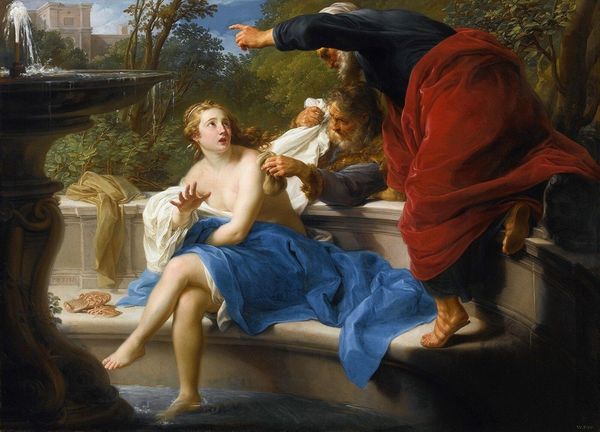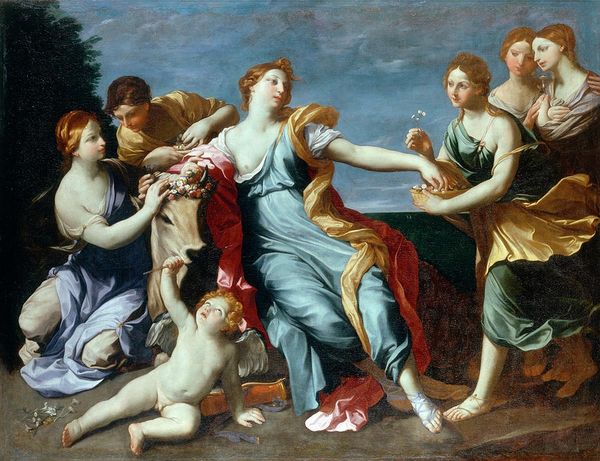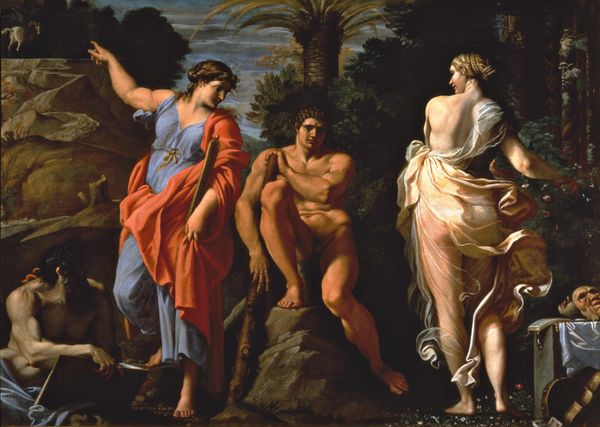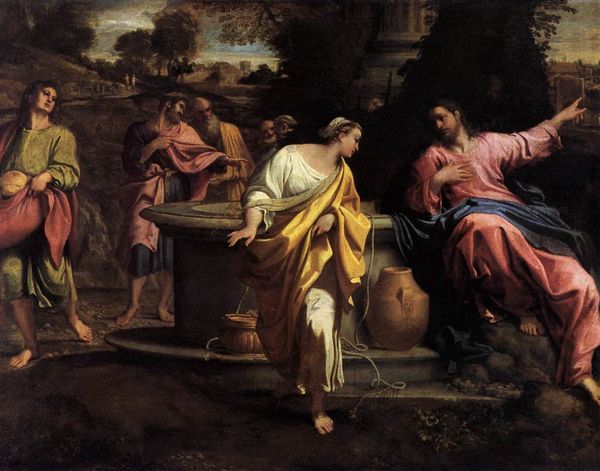
painting, oil-paint
#
baroque
#
painting
#
oil-paint
#
landscape
#
painted
#
figuration
#
oil painting
#
christianity
#
mythology
#
history-painting
#
italian-renaissance
Dimensions: 93 x 121 cm
Copyright: Public domain
Curator: This serene scene, rendered in oil on canvas, is Nicolas Poussin's "The Finding of Moses," dating back to 1638. Editor: My first impression is one of staged elegance. Everyone is so poised, even in the act of discovery. There's a theatrical stillness, almost as if frozen mid-performance. Curator: That elegance, I think, stems from Poussin’s deep engagement with classical ideals. Notice the figures posed like Roman statues, their gestures measured. And look at the architectural backdrop—an aqueduct, evoking the grandeur of antiquity. It’s about historical consciousness and power. Editor: Absolutely. And the clothing drapes and falls in such a precise and affected manner. Beyond the immediate biblical narrative, I’m curious about what symbols and hidden meanings you discern here. What lasting impact can we consider? Curator: Consider the water itself, often a symbol of purification and rebirth. The discovery of Moses in the river connects him to themes of salvation and divine intervention. Furthermore, the gestures are significant: Pharaoh's daughter's hand outstretched toward the child mirrors divine grace, while the watchful figures around them signify protection and future guidance. Poussin uses color to convey specific concepts: the bright reds signify royal status, connecting the women of the court, for instance. The imagery invites viewers to reflect on faith, hope, and providence. It's worth remembering this work found its place at a moment when discussions about religious liberties were roiling France, and visual references like these become politically potent. Editor: It’s compelling how the past—classical antiquity and biblical history—becomes a lens through which Poussin addresses his present. The painting isn't just an illustration; it’s a deliberate construction of historical meaning that promotes authority and the values of the elite. In these precise gestures and balanced compositions, you can understand the appeal for collectors who seek images which stabilize their power in tumultuous times. Curator: It’s a layering of interpretations. The art, beyond its obvious display of wealth, has coded information accessible to the elite classes. The echoes of Moses found in Christ contribute to Poussin's historical and iconographic approach, too. Editor: Right, well, seeing it in this context brings new layers to how I will interpret such "discoveries" in art and in the world. Curator: For me, exploring this work further solidifies that painting remains a cultural artifact and embodies layers of visual heritage that stay relevant throughout history.
Comments
No comments
Be the first to comment and join the conversation on the ultimate creative platform.
